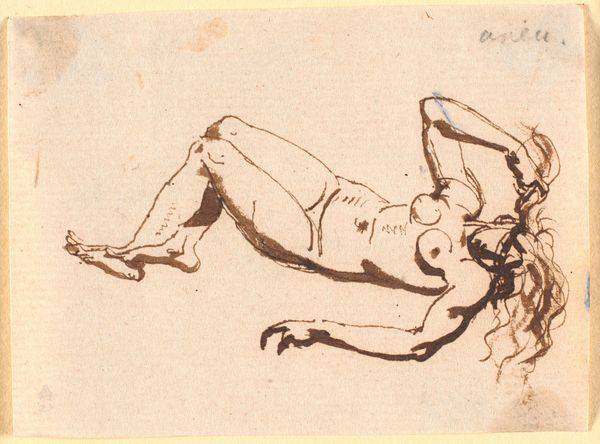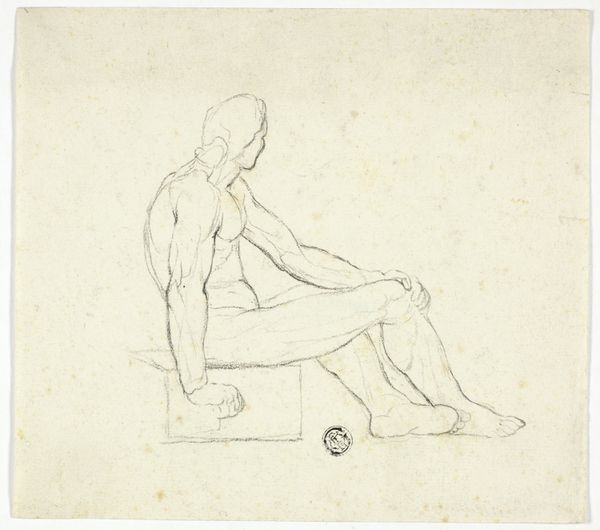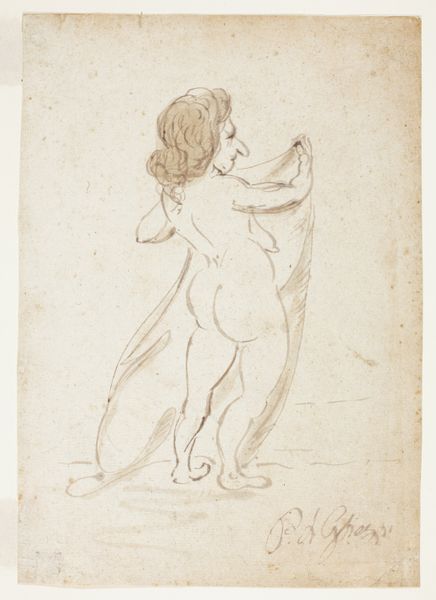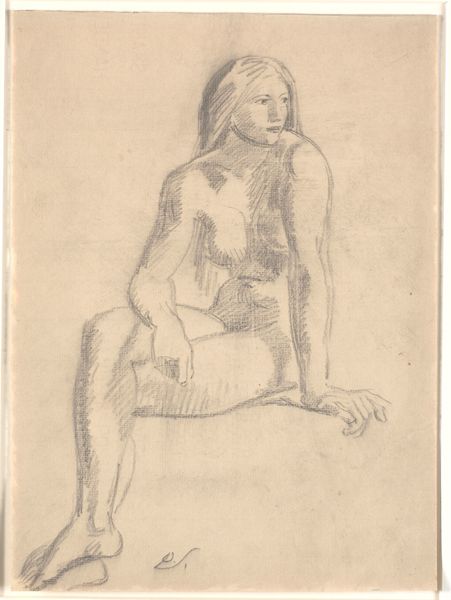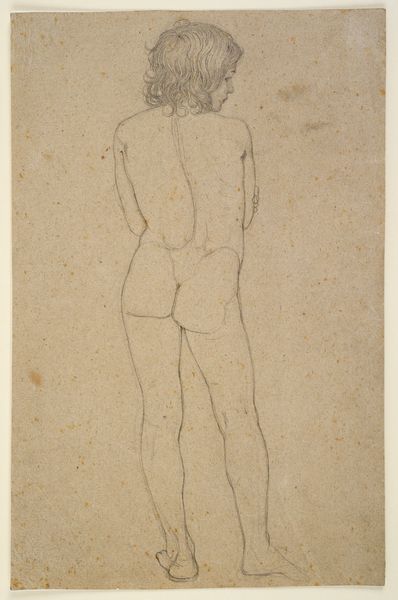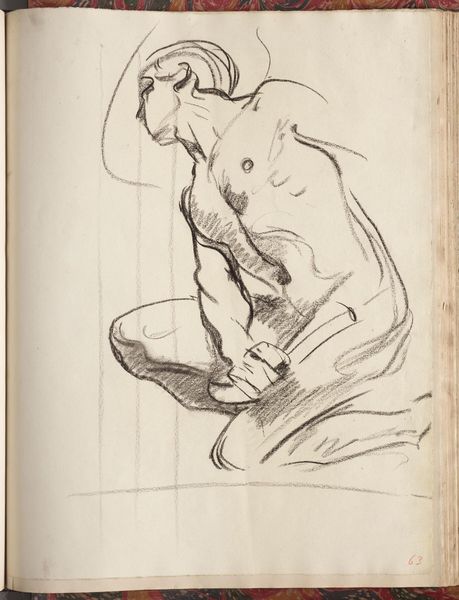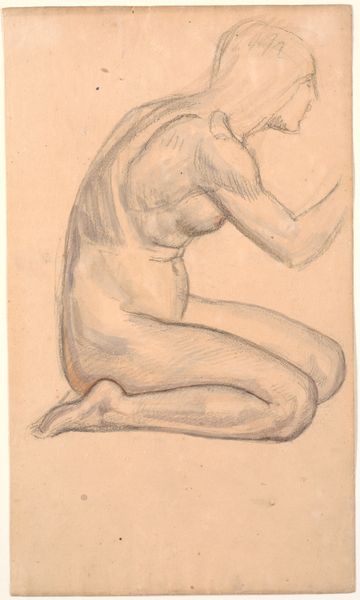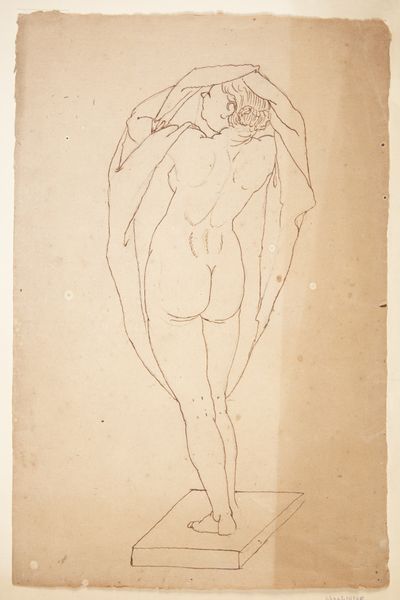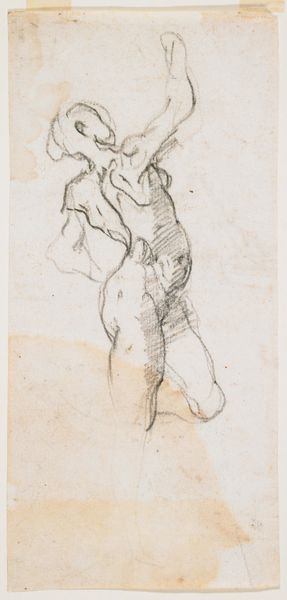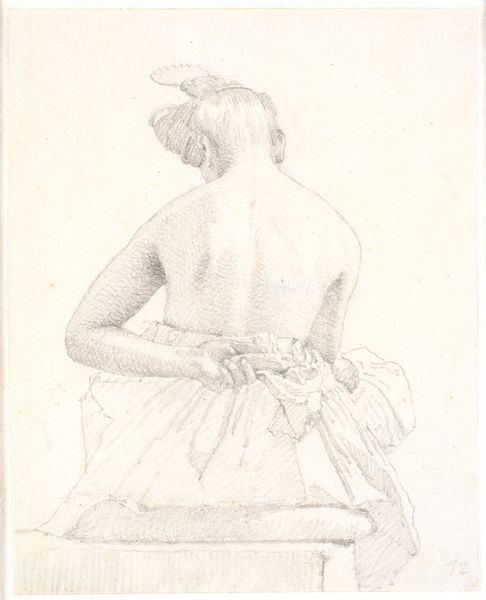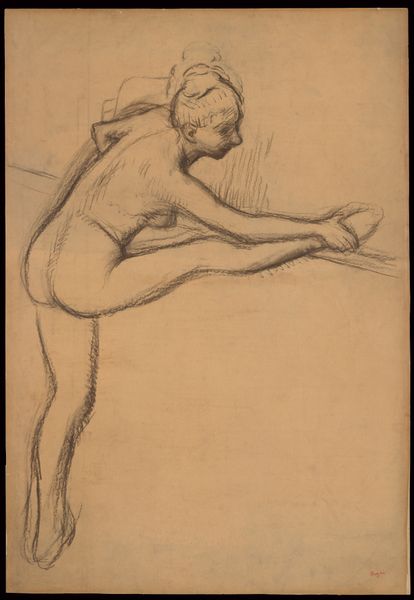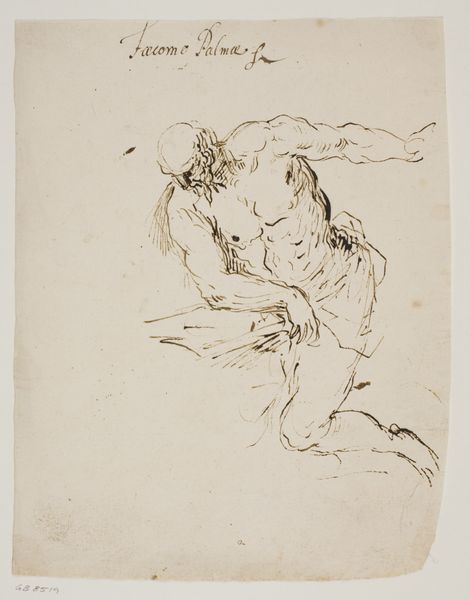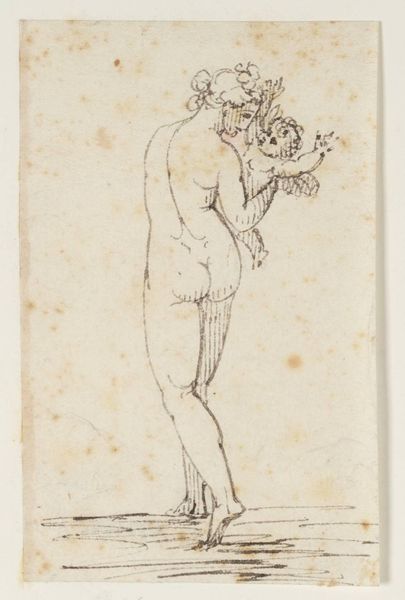
En nøgen siddende kvinde, vendt mod venstre, med oprakt højre hånd 1743 - 1809
0:00
0:00
drawing, paper, ink
#
drawing
#
figuration
#
paper
#
ink
#
academic-art
#
nude
Dimensions: 142 mm (height) x 112 mm (width) (bladmaal)
Editor: Here we have "A Nude Woman Seated, Facing Left, with Right Hand Raised" by Nicolai Abildgaard, made sometime between 1743 and 1809, a drawing rendered in ink on paper. It feels…classical, but the lines are so immediate, almost sketchy. What do you see in this figure's posture and gesture? Curator: The raised hand is key. It immediately activates associations, doesn’t it? Think of similar gestures across art history – supplication, invocation, even theatrical exclamation. Her slight contrapposto and coiled hair bring to mind ancient sculptures, fragments recovered from classical antiquity. But consider: why would Abildgaard choose this particular set of visual references? What feeling might this image evoke for his contemporary audience? Editor: Maybe it’s about idealized beauty, but with a rougher edge, less polished than a marble statue. Was he commenting on or updating those earlier images? Curator: Precisely! Look at how he uses shadow to model her form. Where does the light seem to originate? It almost feels internal, like knowledge illuminating her from within. Also note the position of her left hand; does she look vulnerable, maybe a little afraid? It makes us wonder about her state of mind and inner feelings. This artist is trying to give insight into an emotional experience. The woman becomes more human. Editor: So, this is more than just a study of form; it is using classical imagery to convey real human emotion? Curator: Absolutely. It’s about layering cultural memory with individual experience. Editor: I hadn't considered all the ways that posture and gesture, rooted in classical art, could add layers of emotional and cultural meaning here. Curator: Indeed. That is the power of an enduring image.
Comments
No comments
Be the first to comment and join the conversation on the ultimate creative platform.
